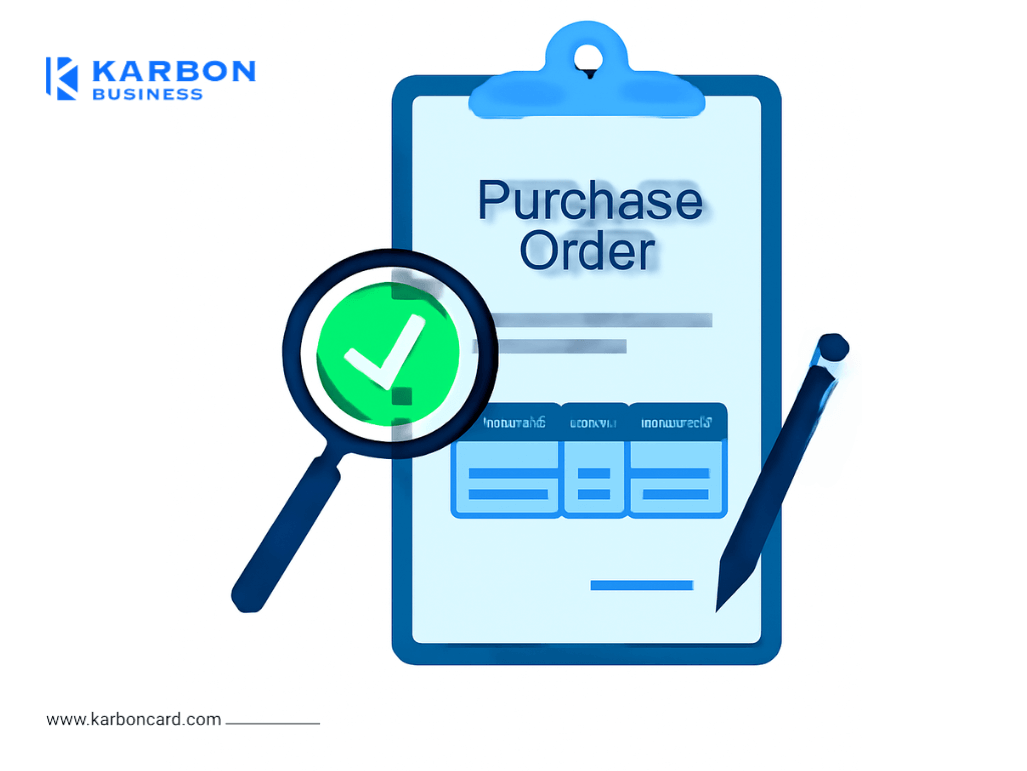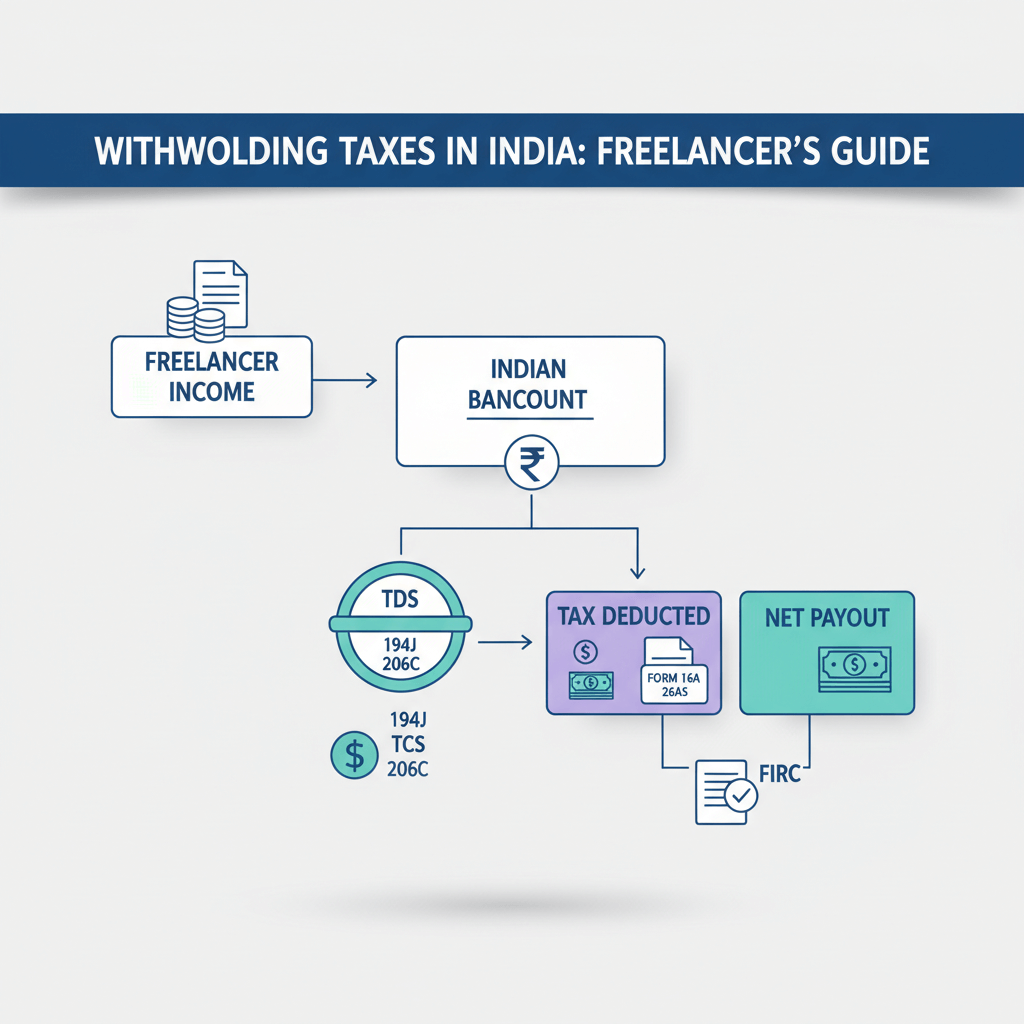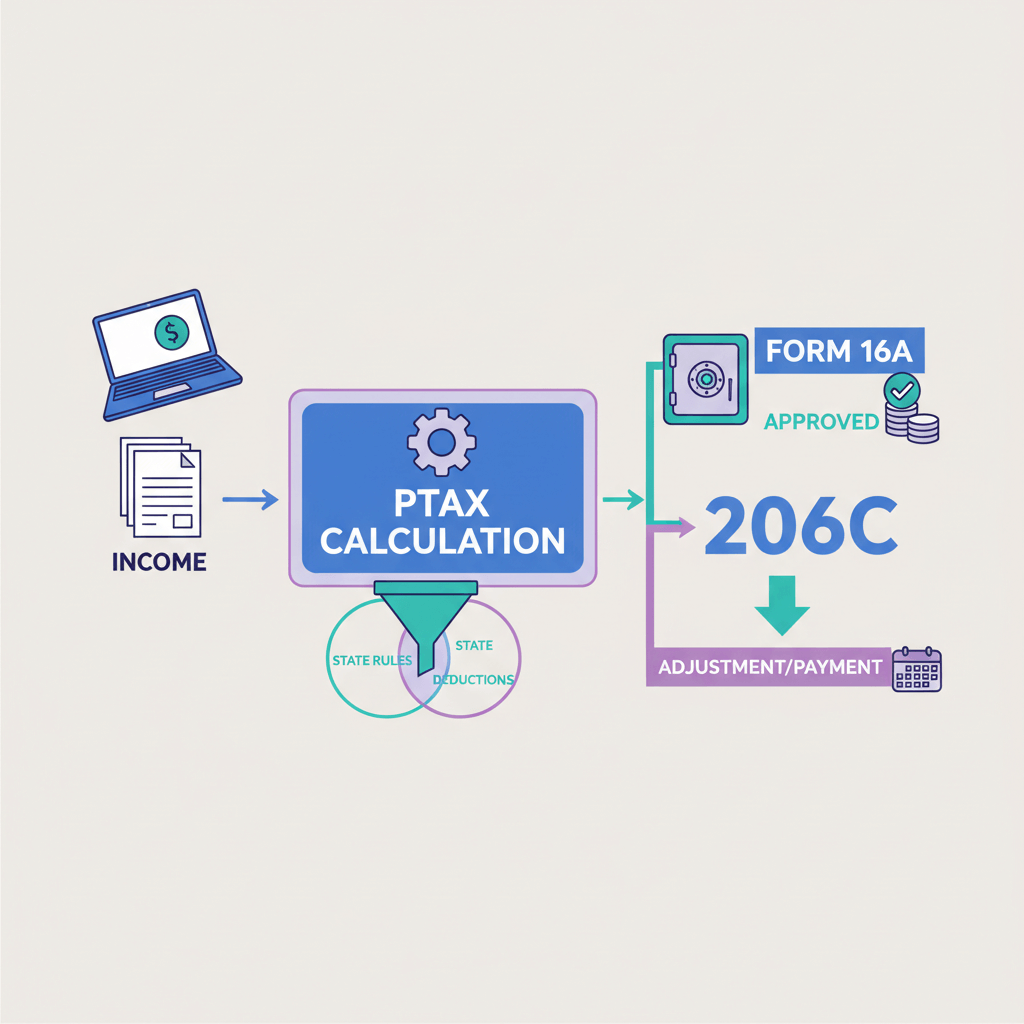What is a Purchase Order?
A Purchase Order (PO) is a formal document that the buyer creates to authorize the purchase of goods or services from a supplier. It is a written agreement confirming the buyer’s intent to purchase and specifies the details of the transaction. The details of the transaction include:
• Quantity
• Price
• Terms of delivery
Note: POs are crucial for both domestic and international transactions.
Purchase Order Format:

A Purchase Order includes the following sections:
• Buyer’s Details: This section includes the buyer’s name, address, contact details, PO number, order date, and shipping address for accurate identification and delivery.
• Supplier’s Details: Contains the supplier's name, address, and contact information to establish the correct point of contact for the transaction.
• Product/Service Information: Lists the description, quantity, unit price, and total amount for the goods or services being purchased.
• Terms and Conditions: Specifies the payment terms (e.g., net 30), expected delivery date, and shipping method, including INCOTERMS for international transactions.
• Legal Terms: Covers any applicable warranty terms, return policies, and other legal protections for both parties involved in the transaction.
• Additional Information (optional): Includes any special instructions, discounts, or promotional details relevant to the transaction.
Domestic vs. International Purchase Orders: What’s the Difference?
When you're buying supplies, you can either source them locally (domestic) or from abroad (international).
Since domestic and international purchases involve different laws, rules, and requirements, the purpose, priority, and format of the purchase order will differ accordingly.
The PO Process Step-by-Step:
A Purchase Order (PO) is a small part of the Procure-to-Pay (P2P) cycle. The cycle starts when you recognize a business need and ends when the payment is made and everything is documented.
Step 1: Identifying the Need for Goods/Services
The process starts when a need for goods or services is recognized, whether it’s materials, equipment, or services. This step helps identify the gap in the business.
Once the need is clear, it’s reviewed and approved by the relevant department or manager to ensure it’s necessary and within budget, preventing unnecessary purchases.
Step 2: Creating the Purchase Requisition
After identifying the need, a purchase requisition is created as an internal request. It outlines what’s required, why, and the estimated cost.
The requisition is then reviewed and approved by the relevant parties before moving forward. This ensures all purchases align with business needs and budget constraints, minimizing the risk of unnecessary spending.
Step 3: Vendor Selection & Negotiation
Once the requisition is approved, the next step is finding the right supplier. This involves sourcing vendors who can meet your needs for price, quality, and timely delivery.
After identifying potential suppliers, negotiations begin to finalize the best terms, including price, delivery schedule, and payment conditions, ensuring both parties are aligned.
Step 4: Issuing the Purchase Order
With the supplier selected and terms agreed, the Purchase Order (PO) is created and sent to the vendor. The PO serves as a formal document, detailing the goods or services, quantities, pricing, payment terms, and delivery schedules.
Once sent, the vendor reviews the PO, confirming the order or highlighting any discrepancies before proceeding.
Step 5: Supplier Confirmation
After receiving the PO, the supplier reviews the details and either approves or suggests adjustments. They’ll confirm if the order is correct or highlight any changes needed, like pricing or delivery terms.
This way both parties are on the same page before moving forward, avoiding misunderstandings or delays down the line.
Step 6: Delivery of Goods/Services
At this point, the supplier ships or delivers the goods/services as per the agreed terms in the PO. This step can take days or weeks, depending on the complexity and delivery arrangements.
For physical goods, the supplier provides tracking information or Bills of Lading to keep you updated on the shipment’s status.
Step 7: Receipt of Goods/Services
Upon delivery, the goods or services are checked to ensure they match the PO in terms of quantity, quality, and condition. If any discrepancies are found, they are noted and communicated with the supplier. A Goods Receipt Note (GRN) is generated as documentation that confirms receipt and compliance with the agreed terms.
Step 8: Invoice Review & Matching
Once the goods/services are received, the supplier sends an invoice. At this stage, a three-way match is conducted between the PO, Goods Receipt Note (GRN), and invoice to verify the quantities, prices, and other terms. If discrepancies arise, they are resolved before processing payment, ensuring accuracy and transparency.
Step 9: Payment Processing
Once everything matches and is approved, the next step is processing the payment. The payment terms (e.g., net 30 or net 60) mentioned in the PO are checked to ensure they align with the invoice. Payment is then processed via the agreed method, such as a bank transfer or credit card, marking the completion of the financial transaction.
Step 10: Closing the PO
Once the payment is made, the PO is officially closed in the system. This final step ensures that the transaction is marked complete. All related documents—PO, invoice, GRN, and payment receipt—are archived for future reference and auditing, ensuring transparency and compliance if the transaction is reviewed at a later date.
5 Different Types of Purchase Orders
Standard Purchase Order
This is the most common type of purchase order, typically used for one-time purchases. It includes details like the price, quantity, and delivery schedule. A standard purchase order is used when a company knows exactly what it needs and when it needs it, making it suitable for straightforward, one-off transactions.
Planned Purchase Order
A planned purchase order is used for purchases that are expected in the future but are not immediately required. It allows the buyer to place an order for goods or services in advance, with a delivery schedule spread over time. This type is often used when a company has long-term needs but doesn’t want to commit to specific quantities right away.
Blanket Purchase Order
A blanket purchase order is ideal for repeated orders of the same items over a period of time. Instead of issuing multiple POs for each order, a blanket order allows companies to place a single order for items to be delivered at intervals or upon demand. It is commonly used for materials or supplies needed regularly, providing flexibility in terms of delivery dates and quantities.
Contract Purchase Order
This type of purchase order is used when a supplier and buyer have an agreement to provide goods or services over a longer term. A contract purchase order is typically tied to a contract that governs the terms of delivery, pricing, and other conditions. It's commonly used in industries where regular supply is required, such as construction or IT services.
Consignment Purchase Order
In a consignment purchase order, goods are delivered but remain the property of the supplier until the buyer uses or sells them. The buyer doesn’t pay for the goods until they are consumed or sold, which reduces the risk of holding unsold inventory. This arrangement is common in industries like retail or manufacturing, where inventory management is crucial.
Is It Legally Compulsory to Initiate a Purchase Order?
The short answer is No.
It’s not legally required to have a Purchase Order (PO) for every transaction. You don't necessarily need one for low-value purchases, emergency purchases, or purchases with preferred vendors where terms are already clearly defined in a contract. For these cases, many organizations find that the administrative effort of creating a PO outweighs its benefits.
But for International Transactions…
However, when it comes to international transactions, having a PO is often highly recommended—and sometimes essential.
The complexities involved, such as dealing with customs regulations, shipping methods (e.g., INCOTERMS), and cross-border payment terms, make a PO crucial.
It helps ensure compliance with international laws, avoids misunderstandings between buyers and suppliers, and provides a clear paper trail for dispute resolution.
Frequently Asked Questions
What is the difference between a Work Order and a Purchase Order?
• Work Order: An internal document specifying tasks, services, or maintenance to be completed, often with labor and materials.
• Purchase Order: A formal request from the buyer to the seller for goods or services, outlining terms, quantities, and prices.
What’s the difference between an Invoice and a Purchase Order?
• Invoice: A document sent by the seller to request payment for goods or services delivered, detailing the amount due.
• Purchase Order: A document issued by the buyer to authorize the purchase of goods or services, specifying prices and delivery terms.
How is a Purchase Order different from a Sales Order?
• Purchase Order: A document from the buyer to the seller, specifying goods or services they wish to purchase.
• Sales Order: A document from the seller confirming receipt and acceptance of the buyer’s purchase order, detailing what will be provided.










